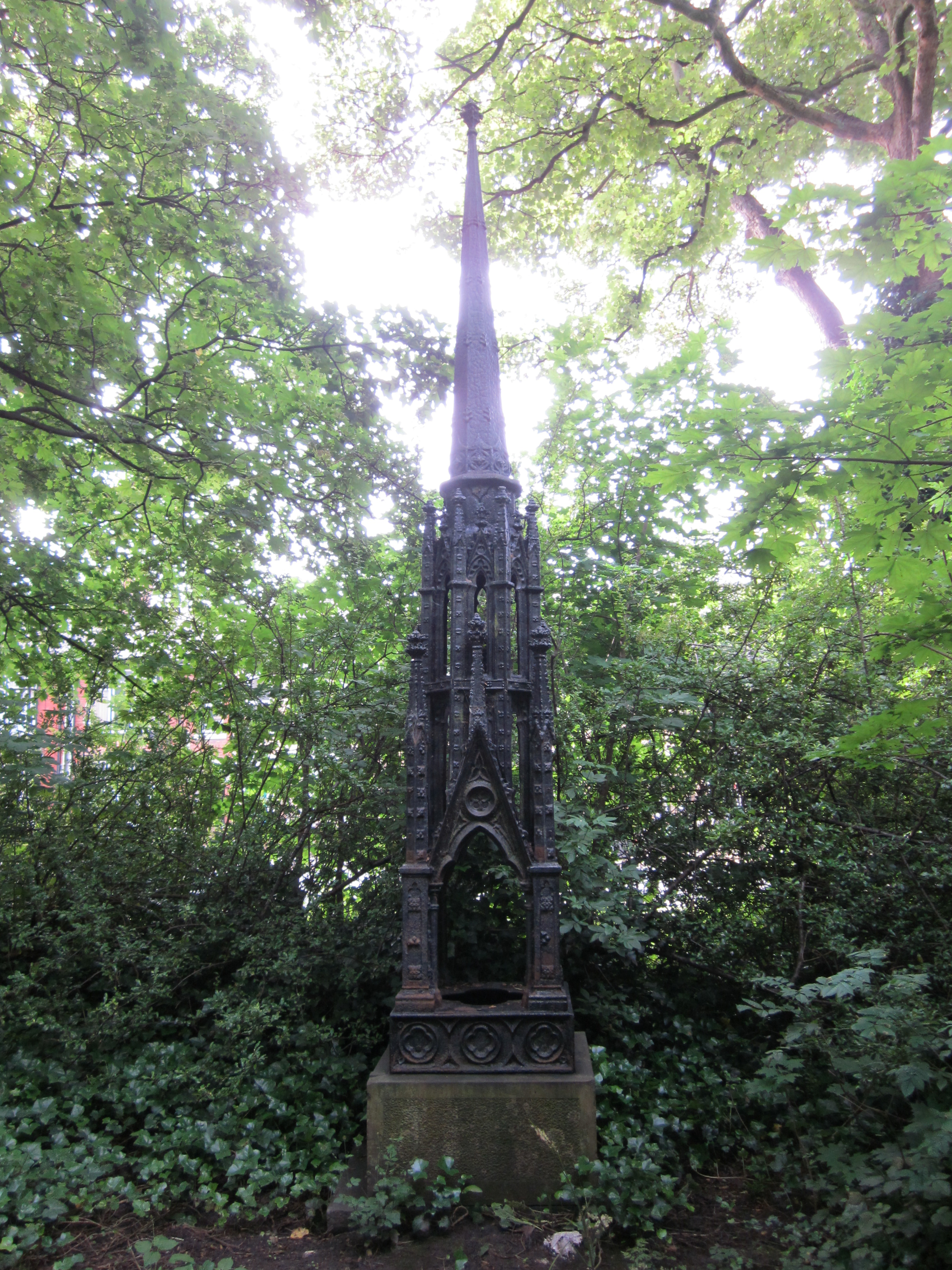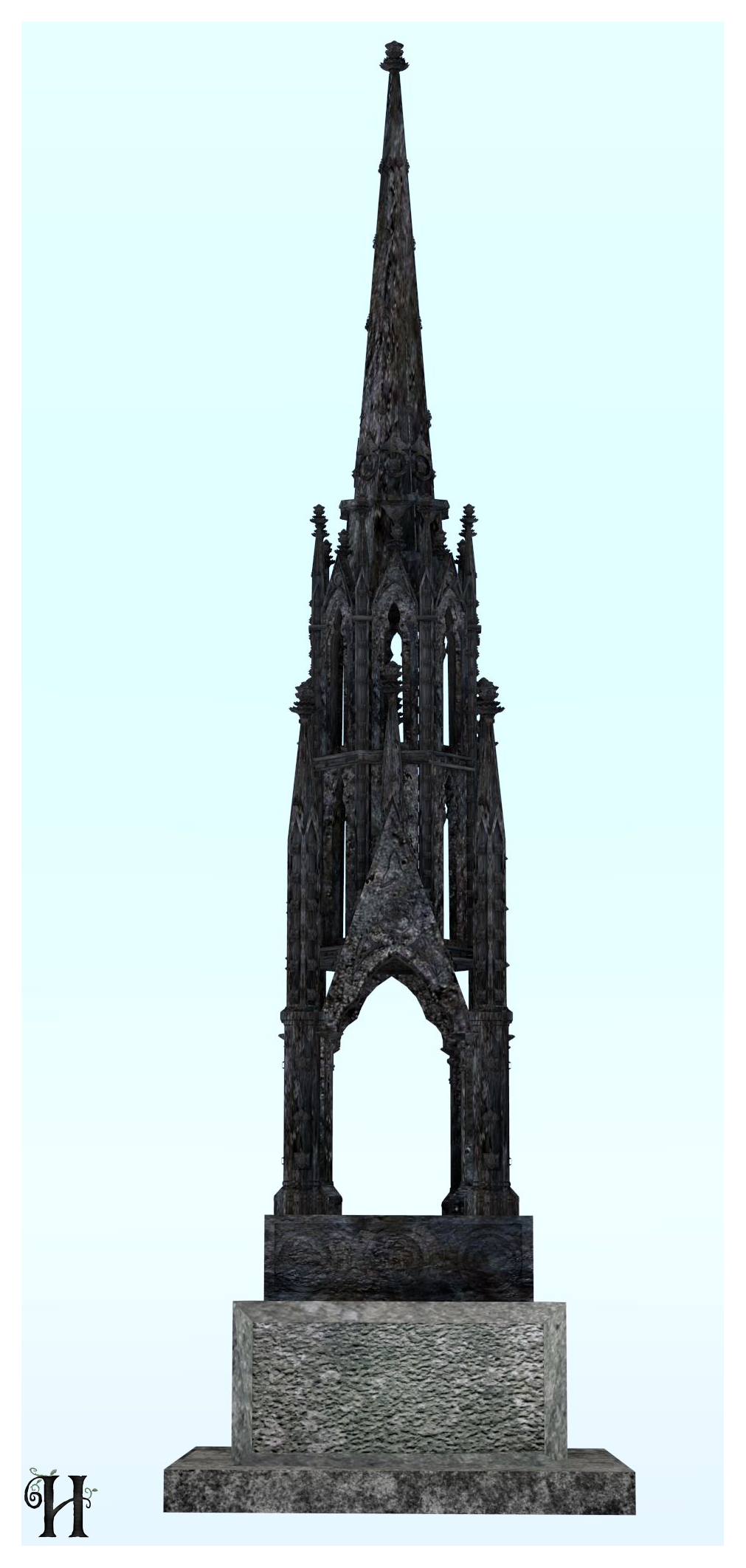
Spring Bank Monument, Hull, UK
Project: Heritage Jam (2014)
Theme: Burial or burial places
About Heritage Jam: "The goal of The Heritage Jam is to bring people together to design and create forward-thinking pieces of heritage visualisation."
Visit the Heritage Jam website.
Software used:Blender
Paradata Document:
The monument featured in this project is a grade 2 listed cast iron monument, dating from around 1860. It has no official name, so I will refer to it as Spring Bank Monument due to its location in Spring Bank West Cemetery, Kingston upon Hull, UK.
I chose this monument for my Heritage Jam project for the following reasons: I’m currently living in Hull, and I am very interested in portraying Hull’s hidden heritage, particularly with Hull being awarded the City of Culture title for 2017. I feel that this is a great opportunity to shout out about the historical locations that have been overlooked. Secondly, the monument fits the Heritage Jam burial theme as it is located within the city’s main cemetery. I also have an art and architectural history background and have a keen interest in medieval and the neo-gothic styles. The monument harks nostalgically to the form of the Eleanor Crosses, the 12 memorial monuments dedicated to King Edward I’s wife, Eleanor of Castile, on the resting places of her funerary casket. I feel that this monument, one of two in the cemetery, makes romantic allusions and reflects the era in which it was created.
Macro: Spring Bank Monument is intended to be part of a wider ongoing project to coincide with Hull’s City of Culture 2017 celebrations of heritage. The project aims to highlight Hull’s hidden heritage, visualising historical locations and objects which are forgotten remnants of Hull’s past, and are not in the public eye. Exploration across Hull is required to discover these intriguing locations. The model will be initially available on this website whilst in development stages in the form of screenshots and historical information. In the long term, the model with other locations and artefacts across Hull will be accessible through online digital applications, on this site and Hull and heritage-themed sites, where users can engage interactively in 3D.
Micro: My construction style is to model each form from a basic mesh as I find it develops my own learning and appreciation of the object I am modelling. This monument is particularly detailed with micro-architectural forms. Spring Bank monument is constructed through reference to photographic records taken by myself, as the historical record for the monument is basic and there are no plan drawings. The monument is listed with English Heritage however the physical site itself does not acknowledge this or signpost to any information. For example, I only discovered it was listed through researching the monument online.
The monument has been represented as it is today, using original, photographic textures from the monument, such as the rough and matte iron finish. An alternative interpretation would be to texture the model in a newly cast form in the 1860s to show what it would have looked like in that period. I have intentionally removed the model from the cemetery location as I wanted the focus to be on appreciating architectural form and to highlight this previously overlooked monument as noteworthy to Hull’s heritage environment.
References:
McCurdy, L (2010) Visualising Architecture: The Experience of Creating Virtual Reconstructions. Unpublished Master's thesis, University of York, UK.
Anon (nd) 'Gothic Iron Monument, Hull' http://www.geograph.org.uk/photo/269093 (1st July 2014).
English Heritage (2014) '1197663- The National Heritage List for England' http://list.english-heritage.org.uk/resultsingle.aspx?uid=1197663 (1st July 2014).
*please click on images for a larger view.
© 2019 Hannah Stamp
All website content, including the website itself, are © Hannah Stamp. All other content is copyright to it's respective owner.

